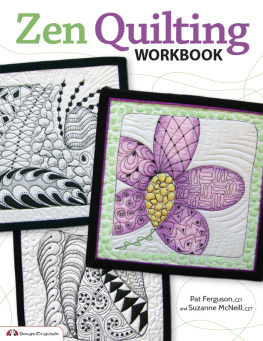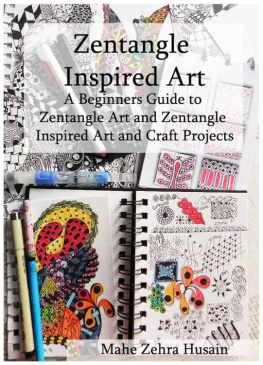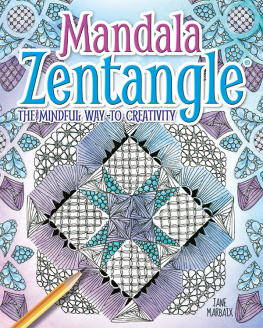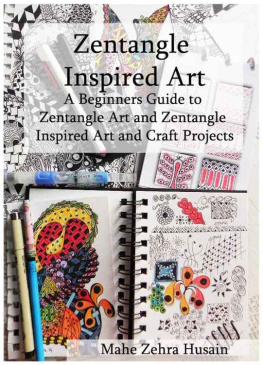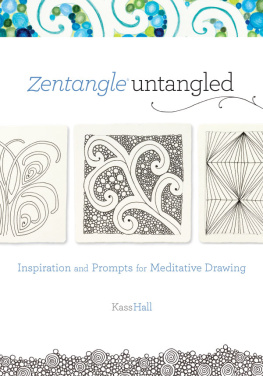Zentangle for Beginners
Unleash Y our Creativity With Zentangle Art, Patterns, and Shapes

Table of Contents
Table of Contents
Introduction
What is Zentangle?
The Story Behind Zentangle
Zentangle Theory
Wondrous Use
Designs and Patterns
Conclusion
Introduction
Zentangle is an artistic and meditative method developed by Rick Roberts and Maria Thomas. Among the many advantages of this art which will be discussed later in this book, zentangle is a great activity for beginners and those who shy away from any kind of drawings and want to take the first step. This is because anything you draw will come from within you. There is no right or wrong in Zentangle and thus, there is no such thing as mistakes or failure. Zentangles are just as much about the process as they are about the outcome.
Thank you for taking the time to read this book. By the time you are finished reading, you will be able to relate t0 this on a much deeper level and will be wanting to create a Zentangle as soon as you can.
Practicing the zentangle method will not only help you unleash your creativity, it will take you on a journey towards inner peace. The zentangle method does not only unlock your creative thinking, it also strengthens many other mental faculties. It will help you dis-entangle yourself from the chaos and nonstop stress of your everyday routine and approach life in a much more calm and effective manner. It will show you how your every action, every move is another stroke in the grand painting of your life and how not being able to change it is one of the most wonderful gifts that you could be given.
For professionals frequently finding themselves under a lot of stress, Zentangle s will allow you to break those shackles of anxiety, stress, loss of temper and any other negative habits you have developed in response to your stressful life. In a very short amount of time (only about 15 minutes), it will help you pick yourself up and give yourself a powerful emotional boost of experiencing success in something you previously though impossible.
For students and researchers, it opens up so many different paths and lines of thought that you may surprise yourself. You will not be focused on the end goal, but only the means you have at your disposal as of today. It will remove the fear of the unknown and the expectation of chaos that comes with that fear. It will free your thought process to a degree you never before thought possible. It will help you relax and achieve a meditative state which will ultimately allow you to achieve a clarity of thought that will feel freeing and empowering.
If you are unsure how drawing a few simple patterns can accomplish all of this, read on to see just what the zentangle method is all about.
What is Zentangle?
Almost all of us have doodled some time or the other, right? Somehow, when we are engrossed in something or are deep in thought, and we have a pen and a paper handy, we don t even realize what we draw. That is doodling. Its done on a subconscious level. It is an absent-minded process. And people often mistake the Zentangle art for a kind of doodling.
However, there are some important differences between zentangles and doodles or any kind of drawing. Its not just the style or technique. The philosophy and process which the zentangle method is founded on make it a far more powerful experience than doodling.
Zentangles are black and white miniature art pieces. They are abstract, unplanned, and are beautifully created through repeated structured patterns playing harmoniously together . As the zentangle slogan says, Anything is possible, one stroke at a time.
The beauty of creating this art is the process one goes through to create it. In fact, the end result is not nearly as important as the journey to it. That is, the zen feeling you achieve while creating your zentangle is more important than what you are actually drawing. It is a form of artistic meditation. A person creating a Zentangle has to deliberately focus on each stroke of the pen. It gives a fluidity or flexibility to the pen as well as the thoughts.
The best part about Zentangle is that the end result is not supposed to be anything. There is no eraser and you dont have to worry about mistakes. There is no right or wrong in Zentangle. You are drawing with no ultimate end goal in mind. If you start out drawing a pattern and make an unintended stroke, treat it as a happy accident, kind of an a-ha moment allowing you to spontaneously create a new sort of pattern using that unintended stroke. Basically, you just glide through your thoughts with your pen. That is the reason it is such a refreshing and soothing combination of meditation and art.
And just like any other meditation process, you need a ritual to reach the meditative state gradually. And the ritual for Zentangle involves a few basic steps.
To create a zentangle, you will need just a couple basic materials to begin. A zentangle is usually created on a 3.5-inch (89 mm) square sheet of unlined, white paper. To draw, you should use a black ink pen.
Af ter years of research and practice, the inventors of this art have chosen a specific Italian paper and a particular kind of pen known as Sakura. More specifically, a Sakura Pigma Micron 001 (0.25 mm) in black. However, these are simply their recommendations. Many people make zentangles just by picking up any blank piece of paper and a pen and by following the Zentangle guidelines.
Zentangl e begins with a free-form border drawn on the paper which provides an outer boundary, also known as the frame and an inner design, known as the string. The border should be drawn just below the edge of the paper and should be done freehand (meaning, without a ruler). It is not meant to be perfectly straight. The string should be a simple, unguided line (or series of line) reaching from one side of the page to the other.
Various patterns called tangles fill this inner design resulting in an abstract piece of art with no specific orientation. The process of adding these tangle designs into your frame and along your string is intended to help you achieve a zen like feeling. Hence the name zentangle.
The Story Behind Zentangle
On a sunny Saturday morning in the hamlet of Whitinsville in central Massachusetts, Maria Thomas, a veteran calligrapher was at work on an illuminated letter in her studio. Her husband, Rick Roberts entered the studio to find her completely focused working on the beautiful design pattern behind the letter. He observed that she seemed to be in a trance, peaceful in her own world. And when interrupted, it seemed as if she had just woken up fresh from a nap.
She later explained to Rick how she experienced feelings of freedom, well-being, timelessness and complete focus with no thought or worry about anything else.
Rick realized that she had just described meditation. Of course Rick could identify it immediately as he had previously lived as a monk in India for a while, before returning home to Massachusetts.
When Rick and Maria discovered this feeling through a simple process of art they wanted to create a system for the world so that many others could enjoy the outcome of such a beautiful combination of art and meditation. And thus began the beautiful journey towards the invention of Zentangle. They say that he was the Zen, and she was the tangle.
Together as life partners and business partners, they made what Zentangle is today an art form with meditative patterns accessible to anyone and everyone to attain inner peace, contentment and a sense of well-being.
The couple believes that anyone who can write already knows the strokes to create a single tangle or a complete picture of Zentangle by using different patterns. They believe that everyone has an artistic side to them, which is often restricted or repressed by a lack of confidence. And as Zentangle has no expectations or limitations, it is an ideal platform for each and every individual to find themselves.
Next page

